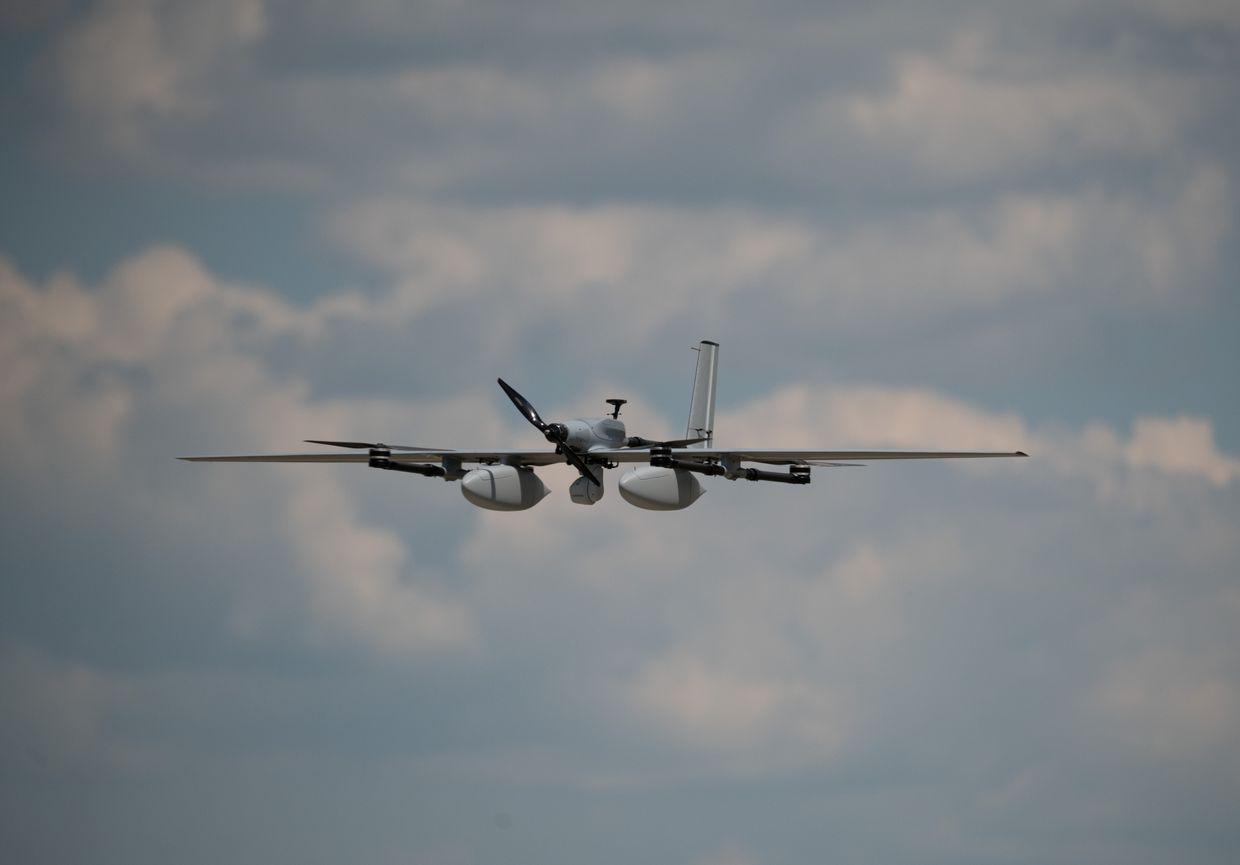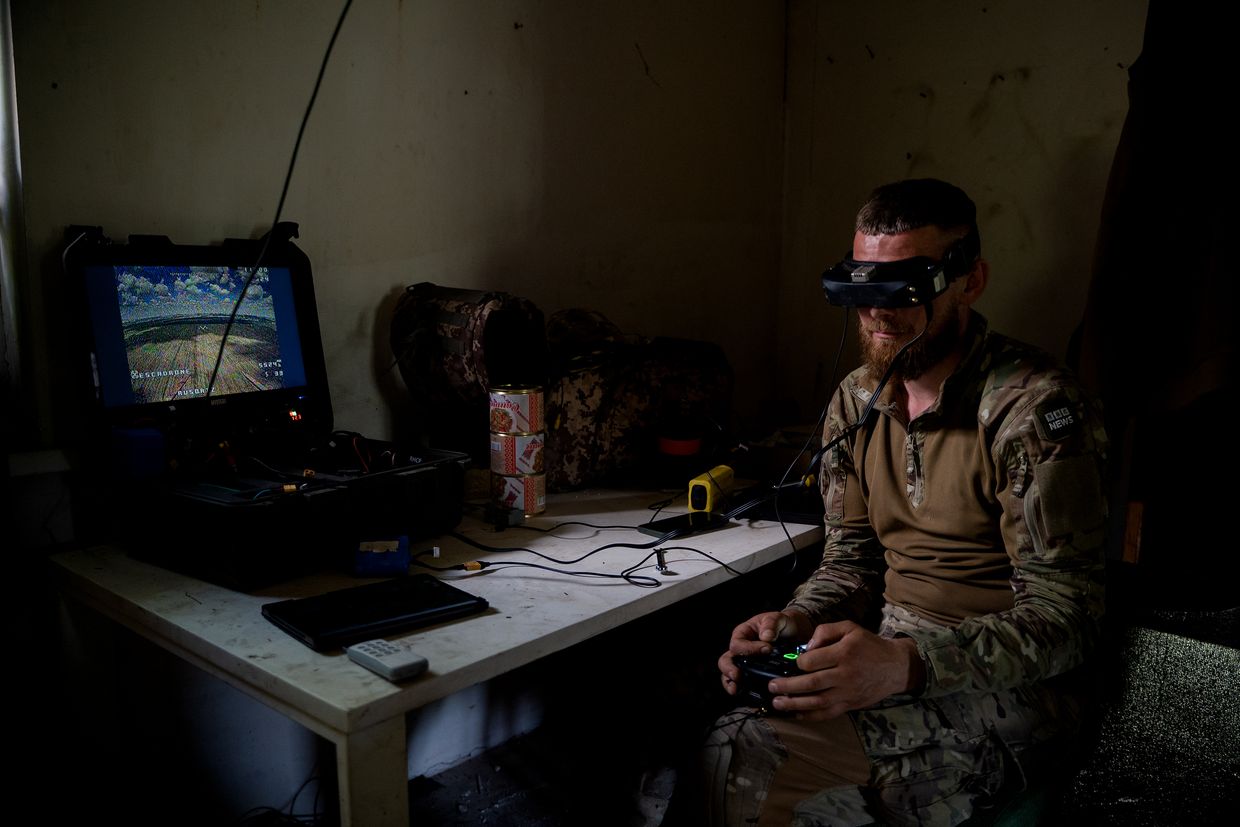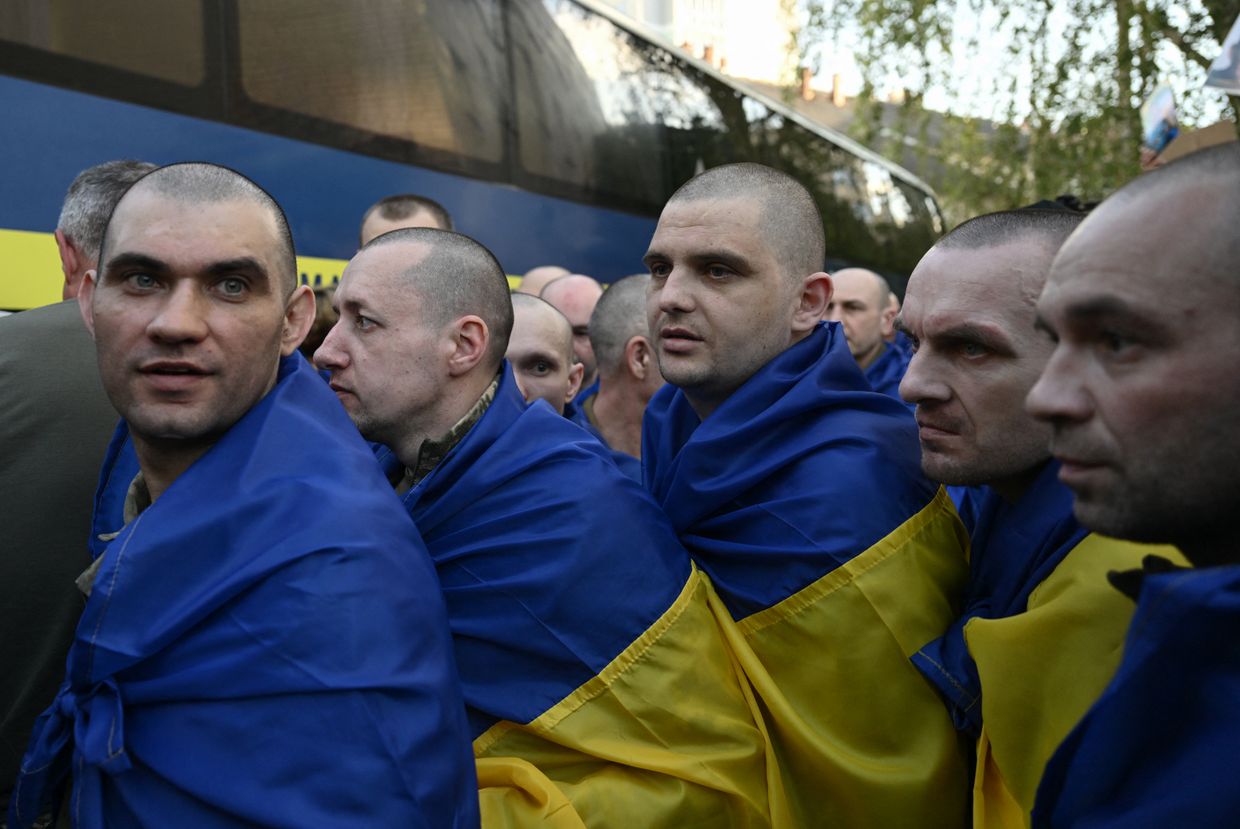The day Russia invaded Ukraine, Ivan Kaunov watched from his 23rd-floor Kyiv apartment in disbelief as rockets came down on his city. He was 30, married, and running a fintech startup that was seeing remarkable traction.
The scion of a Kyivan family that had gotten wealthy on construction and IT, Kaunov had gone to university for marketing, doing a student officer training program to satisfy Ukraine’s theoretically mandatory but half-heartedly enforced nine-month military requirement — training he never expected to use.
“I said ‘I’ll go fight if there’s ever a war,’” chuckled Kaunov. “I never thought it would happen. I was sure there would be no invasion. I was thinking, ‘It’s the 21st century.’”
In mid-March 2022, he joined. Leading 150 fresh recruits to defend a village east of Bakhmut, he would find himself blown up by a rocket as his unit was pulling back from Russia’s advance on the Donbas that May.
A head injury meant rejoining infantry assaults was a no-go, but with drones, he could return to the fight.
After spending around a year piloting mostly reconnaissance drones, Kaunov recognized the need for a more perfect guidance system. He assembled a wishlist of the best gear to put into a Ukrainian drone that would be meant for long-term, deep surveillance usage.
He rallied enough interest to translate into funding for a prototype of the Buntar-1, the basis for his current company, Buntar Aerospace. Rather than fall to Russian jammers or a kamikaze attack, the envisioned Buntar — the Ukrainian name for the Star Wars: Rogue movie — would live to fly another day.
Over the past year, Buntar has armed itself with nearly $3 million in investment from Ukraine, the EU, and the U.S. and is building what Kaunov hopes will be the Cadillac of Ukrainian surveillance drones – high-cost, premium quality, and repeat usage — in a major divergence from the cheap one-time kamikaze drones that have become symbols of Ukraine’s resistance to Russia’s invasion.
Going rogue
The company's latest model is the Buntar-3, a sleek machine to be sold in kits of two for some $200,000, decked out with Western components with the exception of Chinese wiring. The Buntar Aerospace team is currently taking the Buntar-3 along the front line for testing.
Ukrainian drone pilots typically rely on cheap models — initially Chinese-made consumer models like DJI Mavics — but today, mostly analogs made in Ukraine. The assumption remains that most will fall in flight.
Buntar says it is different in that it aims squarely for the top shelf of the market. The radios on the Buntar 1 are, for example, U.S. imports, a trio of high-end models from L3Harris, Persistent Systems MQ5, and Silvus. And the cameras, if including night vision, can run up to $75,000 — the most expensive part of any recon drone.
Buntar’s premium drones recently started probing the front lines. But as with many of the most ambitious Ukrainian drone firms, the guiding light is not just to win the war, but, ultimately, the West, specifically a Western arms market that’s been following the war in Ukraine raptly.
The team recently began front-line tests on the Buntar-3 and boasts a connectivity time of 98% — a massive improvement over the 30% of more rank-and-file drones that they attribute to the quality of components, which hail from the U.S. and U.K. in addition to Ukraine.
“It’s the biggest war since WWII. Lots of new technology, lots of electronic warfare,” says Bohdan Sas, Buntar’s Chief Technology Officer. “Drones that were designed by civilian engineers for a civil environment before the war don’t work in this war. So this is all custom.”
"Drones that were designed by civilian engineers for a civil environment before the war don’t work in this war."
Beyond his experience at the front, the highly extroverted, heavily tatted, and always clean-shaven Kaunov is a convincing ambassador for the Buntar brand. His is a classic story of Ukraine’s current generation of military tech startups: A soldier with a background in IT and Western financing who managed to blend the three into his own drone project.
Kaunov’s drone work lines up closely with the emergence of unmanned aerial vehicles (UAVs) as a game changer in Ukraine’s resistance to Russia. By 2023, the Ukrainian government understood it had a unique development on its hands and started pouring money into the domestic drone industry.
That industry has grown rapidly and by many accounts is producing the majority of drones Ukraine is using on the front these days.

Given the ad-hoc means by which many drones make it to the front, hard numbers are tough to come by. President Volodymyr Zelensky said in mid-October that the government had already achieved its goal of one million Ukrainian drones produced in 2024. The Royal United Services Institute, a U.K.-based think tank, last year estimated Ukraine’s drone losses at 10,000 units per month.
Very few Ukrainian drones cost even the $20,000 that Buntar is asking for its cheaper recon drone, the Skyhopper.
Buntar counts “tens” of its fixed-wing Skyhoppers already sold to the front. “Each unit completes dozens of missions, maintaining high altitudes to avoid being shot down,” says Kaunov.

Thus far, Kaunov says only one Skyhopper has gone down — due to friendly fire. “I know exactly the tree it’s in in no-man’s land. Not worth trying to get,” he says.
The Buntar units 1, 2, and 3 are still in testing, with Buntar-1 seeing some performance at the front lines. Kaunov says the Buntar-3 has achieved a flight time of three hours — putting it up there with the German Quantum Systems’ Vector and the Estonian Threod’s EOS VTOL, two drones that Kaunov sees as future competitors, which similarly run nearly 200,000 euros per system.
CoPilot, the company’s navigating and auto-piloting software, is likely the most marketable of Buntar’s products right now, provided it can readily adapt to new drone hardware and be brought on board new mission types. Software is easier to scale up than physical factories and the Ukrainian government maintains strict controls on the export of military goods.
With its software registered abroad, CoPilot is theoretically free to go into the drone systems of foreign militaries.
Introducing official
merch from the Kyiv Independent
Western skies
But here, Buntar has a leg up. Part of the firm’s success is thanks to Kaunov’s connections to the West, and, particularly, his knowledge of Western business financing. Prior to the full-scale invasion, his last project was FinMap, a still-functioning company selling B2B budgeting software.
Kaunov’s FinMap co-founder Oleksandr Solovei continues running FinMap today. As is typical of startups, Buntar remains a much more public-facing company than many of the massive drone makers who are at this point well-established in Ukraine but who keep relatively low profiles.
Like FinMap, Buntar Aerospace operates via a U.K. company that has eased the process of getting Western investment and, Kaunov hopes, sales.
Buntar has managed to gather up $2.7 million in funding in just 13 months of existence. By the standards of Silicon Valley, it’s not a massive sum, but among the young generation of Ukrainian military tech startups, it’s one of the larger publicly acknowledged war chests.
Other leaders include drone software company Swarmer and disinformation startup Osavul, both using AI, who announced similar funding rounds in September. For comparison, many defense startups in Ukraine rely on $25,000 government grants to get off the ground.
In addition to new drone models and workshops, Buntar has used the new funds to staff up, employing some 60 people, including Kaunov’s father, Serhiy, and three brothers.
Several of Buntar’s investors remain unidentified. Buntar received a grant from Brave1, a government program for miltech, as well as various government awards. Private investors include several founders of Uklon, a Ukrainian equivalent to Uber. The funding allowed Buntar to acquire a smaller UAV manufacturer over the summer.

Despite Buntar’s financial savvy, questions remain about the battlefield readiness of Buntar drones. The Belgium-based Seven Capital is another early investor concerned about the core product.
“About Buntar, we’ve had a lot of great feedback from investors. But not from the polihon (drone testing field). Not from soldiers. Not from our engineers,” Brent Christiaens, founder and managing partner of Seven Capital, tells the Kyiv Independent.
Buntar has already expanded rapidly, currently working on several updates to the Buntar-1, continued production of the Skyhopper, and a new line of kamikaze drones. The firm is currently working out production in the U.K., which would allow them to avoid the export controls currently holding more or less all drones made within Ukraine inside the country.
Getting around those controls is, however, a controversial proposition during wartime.
While the war guarantees local demand, it’s tough to build a drone that can compensate investors and keep staff fed within Ukraine, where the Defense Ministry caps profits on military hardware at 25% over cost.
"It’s tough to build a drone that can compensate investors and keep staff fed within Ukraine."
Whether Western buyers will be open to a Ukrainian drone competing on equal footing with those built by German, U.K. or Israeli companies is a question that may well go unanswered until after the war.

Buntar is in a fairly unique situation in that it has money and staff that allowed the project to draw eyes even before getting their first planes to market, thanks in no small part to Kaunov’s marketing acumen. He anticipates the Skyhoppers, which Buntar prices at around $20,000, receiving a contract from the Ukrainian Defense Ministry before the end of this year, and says that the Buntar-3s just passed tests critical to securing such a contract of its own.
But if the higher-end planes currently under testing don’t pass muster, Buntar could well flounder.
Kaunov anticipates a ceasefire of sorts in the next year but sees Ukraine continuing to buy up weapons for its arsenal afterward on the assumption that Russia will be back.
Like many of his peers building defense tech in Ukraine, he’s hopeful that before a ceasefire Buntar will prove itself in battle enough that Western militaries will clamor for it on the basis of quality, rather than cost.














